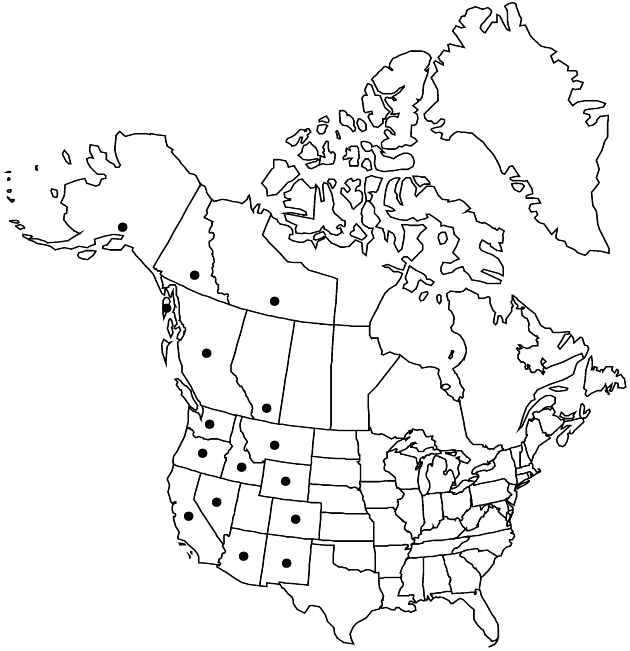Senecio triangularis
Fl. Bor.-Amer. 1: 332, plate 115. 1834.
Perennials, (20–) 50–120 (–200) cm (caudices branched, ± woody). Herbage glabrous or sparsely floccose-tomentose when young. Stems single or loosely clustered. Leaves evenly distributed; petiolate; blades narrowly triangular, (3–) 4–10+ × 2–6 cm, bases usually ± truncate, sometimes tapered, margins usually dentate, rarely subentire (distal leaves subsessile, smaller). Heads 10–30 (–60) in corymbiform to subracemiform arrays. Calyculi of 2–6 bractlets (rarely more than 2 mm). Phyllaries (± 8) ± 13 (± 21), 6–10 mm, tips usually green, rarely black. Ray-florets ± 8; corolla laminae 9–15 mm. Cypselae glabrous. 2n = 40, 80.
Phenology: Flowering summer.
Habitat: Damp places, open woodlands, especially rocky stream banks in coniferous forests
Elevation: 100–3300 m
Distribution

Alta., B.C., N.W.T., Yukon, Alaska, PH, Ariz., Calif., Colo., Idaho, Mont., Nev., N.Mex., Oreg., Wash., Wyo.
Discussion
Plants of Senecio triangularis with narrow, subentire leaves that taper to the petioles are occasionally encountered in acid bogs in Oregon and Washington and less frequently elsewhere. They are regarded as edaphic variants; they have been recognized as var. angustifolius.
Selected References
None.